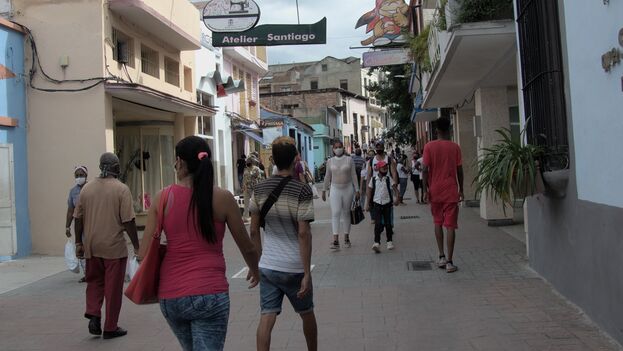
![]() 14ymedio, Havana, 28 January 2023 — The Public Health authorities diagnosed 25 cases of leprosy in Santiago de Cuba in 2022, according to Yamila Valiente Hernández, the head of the provincial Dermatology group, speaking to the official newspaper Sierra Maestra
14ymedio, Havana, 28 January 2023 — The Public Health authorities diagnosed 25 cases of leprosy in Santiago de Cuba in 2022, according to Yamila Valiente Hernández, the head of the provincial Dermatology group, speaking to the official newspaper Sierra Maestra
Speaking in the framework of the World Day to Fight Leprosy, celebrated on the last Sunday of each January, the official downplayed the incidence of these cases for “a population as large” as that of the province. The number “is not important,” Valiente Hernández said, although she acknowledged that the presence of lepers in Santiago de Cuba is “shocking” due to the “rejection” they generate in others.
Despite advances in treatment, the doctor pointed out, leprosy “continues to cause a lot of rejection by the population towards people who suffer from it, even from their own families.”
Valiente Hernández assured that positive patients are compulsorily subjected, as complementary therapy, to psychological care. The World Health Organization (WHO) subsidizes, in theory, medicines for leprosy patients around the world, among which are antibiotics such as rifampicin, clofazimine and dapsone.
The most up-to-date data on leprosy cases in Cuba dates from January 2022, when the Ministry of Public Health reported 81 patients had been detected throughout the country in 2021, a figure, the institution assured, which represented a decrease of 29.5% in relation to the previous year.
This disease is caused by the bacterium mycobacterium leprae and is transmitted through the respiratory tract or by direct contact. The risk factors that are associated with this disease are malnutrition, overcrowding, lack of hygiene and the immunological susceptibility of the infected person.
The doctor explained that an infected person can take from six months to five years to show the first symptoms, such as headache, cramps or paresthesias (burning sensation on the skin). Spots lighter than the patient’s skin colorare also a sign of the disease.
The specialist explained that there are four manifestations of the disease, each with different signs and symptoms. One is the initiator, which is when the person has spots with poorly defined borders and low sensitivity. At this stage, she added, a patient can be stuck with a needle and feel little or no pain compared to healthy skin.
Then there is tuberculoid leprosy, which also manifests with spots, but with borders delimited by the presence of papules or grains. In this case, the patients also have no sensation in the contaminated skin areas, due to sensory disturbances in the peripheral nerves.
Lepromatous leprosy is the most severe form of the disease and differs from the first two in that it presents various lesions throughout the body. In addition, there is some insensitivity in the lesions of the palm of the hands or feet, the eyebrows and eyelashes fall out, and “involvements at the level of the viscera with a moderate increase in the size of the spleen, liver or testicle” appear, the doctor explained.
Finally, the fourth form is multi-bacillary, which occurs when the lesions simulate hives, with a clear center and a double pink border. As in the other stages, it is accompanied by sensitivity disorders, alopecia of the eyebrows and eyelashes, and edema in the feet.
____________
COLLABORATE WITH OUR WORK: The 14ymedio team is committed to practicing serious journalism that reflects Cuba’s reality in all its depth. Thank you for joining us on this long journey. We invite you to continue supporting us by becoming a member of 14ymedio now. Together we can continue transforming journalism in Cuba.
